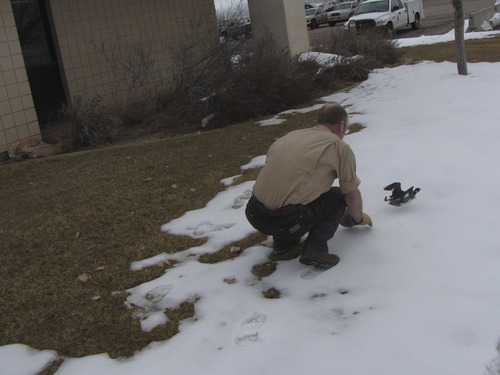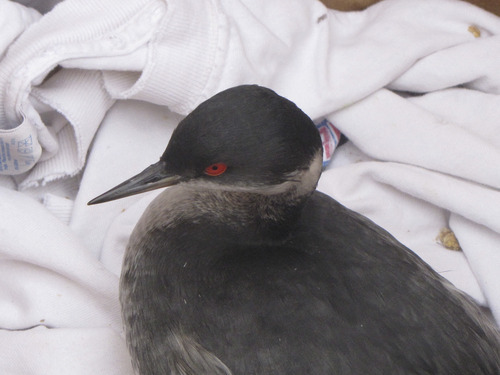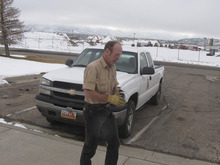This is an archived article that was published on sltrib.com in 2011, and information in the article may be outdated. It is provided only for personal research purposes and may not be reprinted.
Cedar City • The Utah Division of Wildlife Resources office in Cedar City had thousands of dead, injured and confused Eared Grebes on its hands after the migrating birds crash-landed in the southcentral Utah community.
DWR spokeswoman Amy Canning confirmed that a large flock of the water fowl plunged from the skies Monday night. An estimated 1,500 birds died after hitting the parking lot of a Walmart store and other open areas of the city.
"These Eared Grebes were migrating south, as they usually do this time of year, but this time it was during a storm. We're thinking they mistook the glistening of the [Walmart] parking lot for a lake," Canning said Wednesday. "Thousands of the birds went down [and] some were killed, but we also rescued a bunch. Citizens were bringing them in from all over Cedar City."
Cedar City resident Josh Schaffer dropped off a live bird Wednesday afternoon that he found along the side of a road. Between Tuesday and Wednesday, he said, he brought 31 of the live birds to the DWR.
Schaffer, who works clearing snow from Cedar City businesses, said he found the birds in different locations around the city and in open fields — live birds mixed in with dead ones.
"Some are having a hard time," he said.
Keith Day, a wildlife biologist with the DWR in Cedar City, said downed birds were reported from Enoch just north of Cedar City to at least Kannaraville, about 15 miles south of Cedar. The dead birds will be disposed of in a landfill.
He said the incident has created interest around the country, including at the University of Wisconsin, which requested some of the birds for display, and from a researcher at the Smithsonian Institution who has been studying the species for 25 years.
In all, DWR staffers and volunteers were able to rescue up to 3,500 of the birds. Most were taken about 60 miles south to Quail Lake, near St. George, and released on Tuesday.
Lynn Chamberlain, an information and education specialist for DWR's southern region, said Cedar City residents continued to bring birds to the agency's office on Wednesday. "We check them out and then take them down [to the lake] and release them, too," he said.
Chamberlain said there have been rare, past occasions where migrating water fowl have crash-landed in the region, but never in memory by such numbers.
He estimated that roughly 35 percent of the Eared Grebes that came down from stormy skies Monday night died, putting the total number of the top-heavy birds that are thought to have attempted landings at near 5,000.
"These birds just aren't built for landing on the ground, they're designed for the water," he said. "They are big-bodied birds relative to their size and compared to [the length of] their wings. And when they land, they come down fast, at 30 to 35 mph."
If they land on water, the birds — which feed by diving for insects — are fine. But their legs, located toward the rear of their bodies, won't support ground landings. "They hit the ground and tumble, and that leads to broken wings, broken necks and broken bodies," Chamberlain said.
About Eared Grebes
Length • 12 to 13.5 inches
Wingspan • 20.5 to 22 inches
Weight • 7 to 21 ounces
Habitat • Shallow lakes and ponds. During migration and winter, birds prefer salt water. Occur in great numbers in super salty habitats, where fish are absent. The Great Salt Lake is a major summer area for the species.
Flight • For perhaps nine to 10 months of the year the species is flightless, the longest flightless period of any bird in the world capable of flight. They can take off only from water.
Migration • The Eared Grebe migrates only at night. Because of the length of its fall staging, its southward fall migration is the latest of any bird species in North America.
Source • The Cornell Lab of Ornithology







